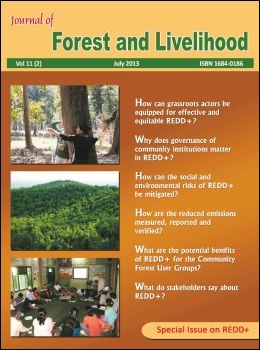Grassroots Capacity Building for REDD+: Lessons from Nepal
DOI:
https://doi.org/10.3126/jfl.v11i2.8617Keywords:
REDD , capacity building, stakeholders, institutions, community forestryAbstract
Meaningful engagement and effective participation of grassroots stakeholders and forest managing communities in national policy formulation and local institutional processes for forest management have implications for the future global climate regime and poverty reduction among forestdependent poor. In this context, the institutional and technical capacity of grassroots stakeholders is critical in ensuring effective and successful implementation of Reducing Emissions from Deforestation and Forest Degradation, including Conservation and Sustainable Management of Forests and Enhancement of Forest Carbon Stocks (REDD+). Capacity building for grassroots stakeholders is particularly crucial as REDD+ has to be implemented in a complex local environment shaped by multiple land use systems, sharply divided politics, conflicting policies, different levels of forest dependencies, complex social relations, unclear governance and tenure structures and differential climate impacts. It has been learned from the grassroots capacity building programme that there is a need of partnership and collaboration between grassroots stakeholders to build capacity for fighting against climate change at local level. However, there is no ‘one size fits all’ formula for capacity building, partnership and collaboration. Multi-pronged and multi-scale capacity strengthening strategies that draw on the strengths of various learning methods and address the unique needs of targeted stakeholders would be effective. These would/ should always be target-driven, addressing the specific needs and conditions of stakeholders, and reflecting their sustainable development strategies, priorities and initiatives. There is still a need to re-orient and strengthen the capacity of the key stakeholders of REDD+ in Nepal so that they can better analyse and understand their own carbon forestry conditions and develop strategies to get more benefits from the REDD+ scheme.
DOI: http://dx.doi.org/10.3126/jfl.v11i2.8617
Journal of Forestry and Livelihood Vol.11(2) 2013 1-13
Downloads
Downloads
Published
How to Cite
Issue
Section
License
CC-BY-NC: This license allows reusers to distribute, remix, adapt, and build upon the material in any medium or format for noncommercial purposes only, and only so long as attribution is given to the creator.





